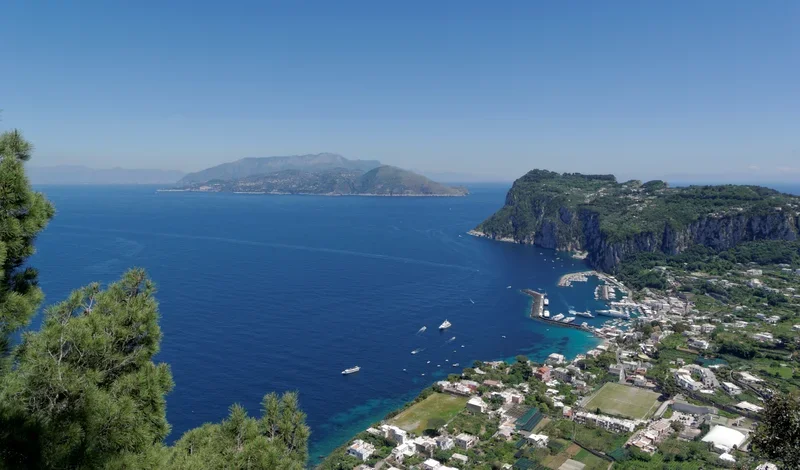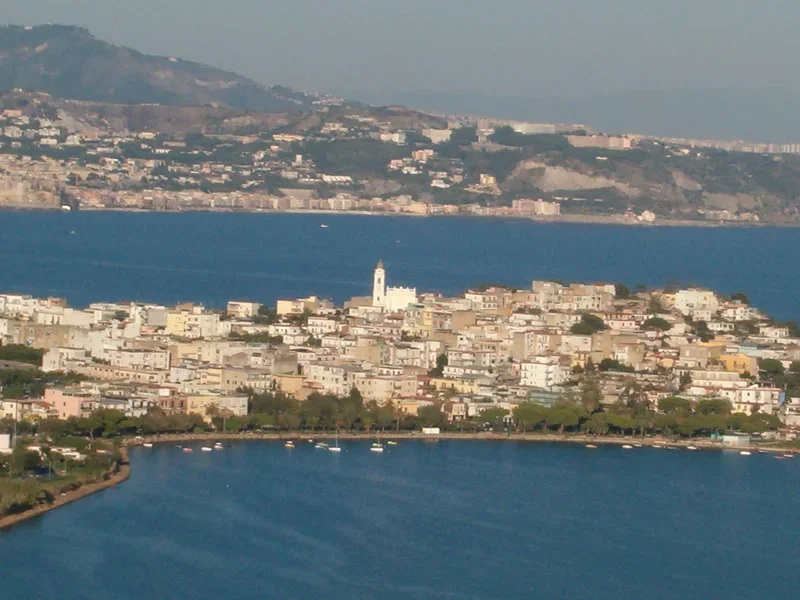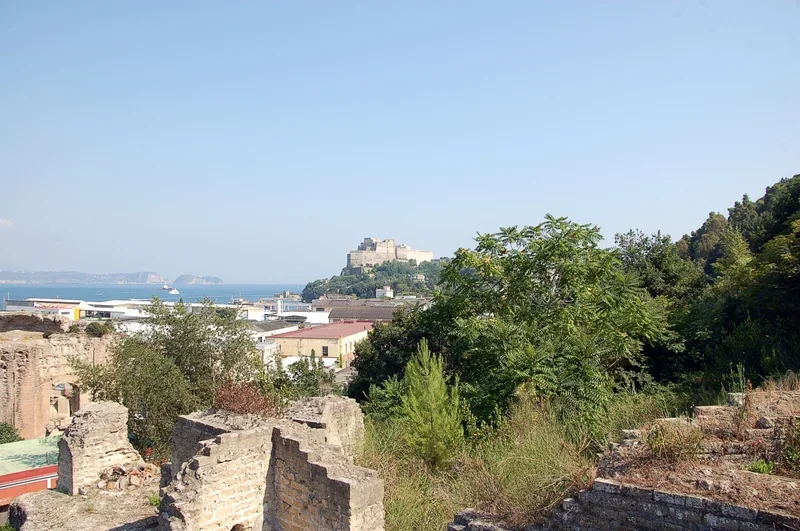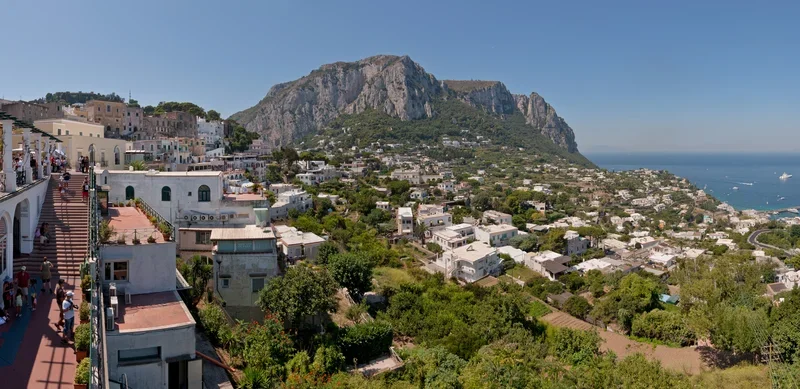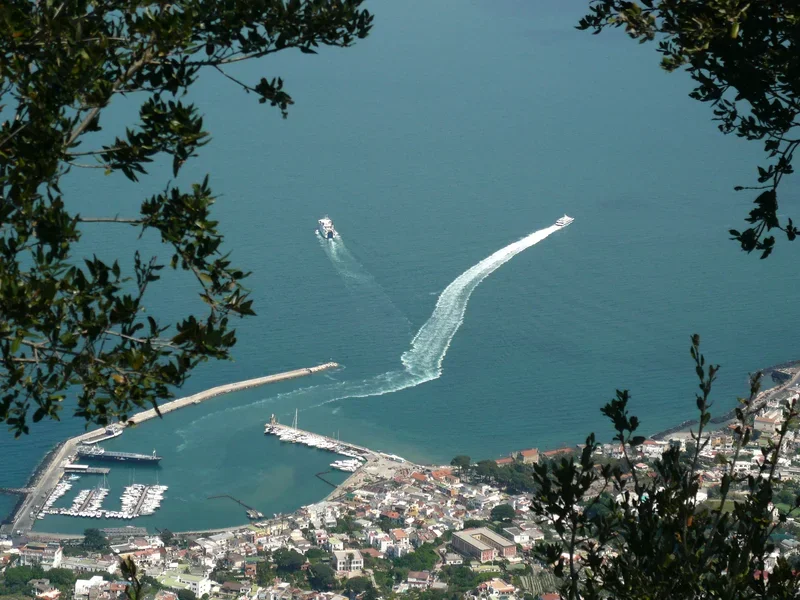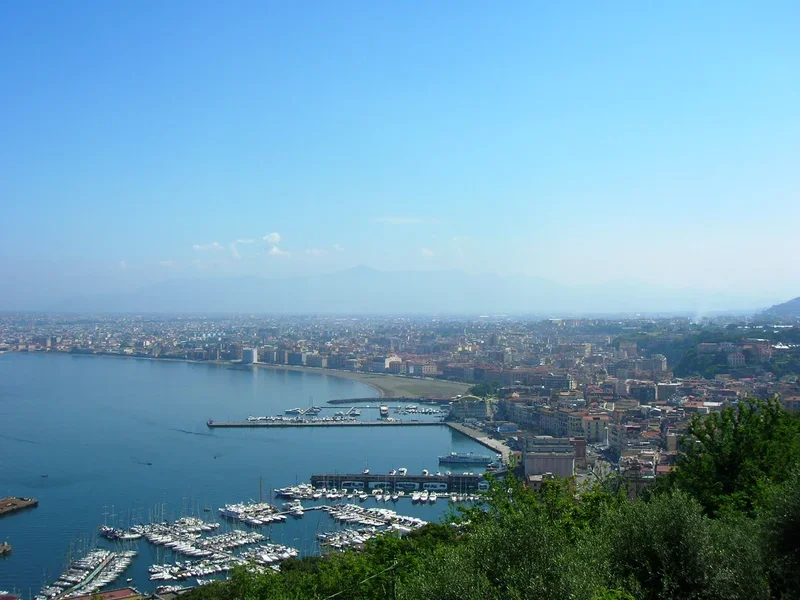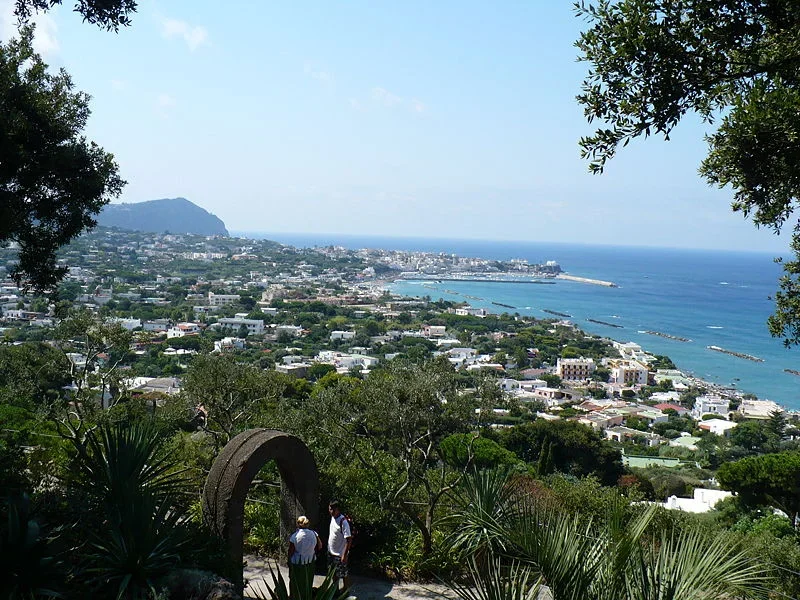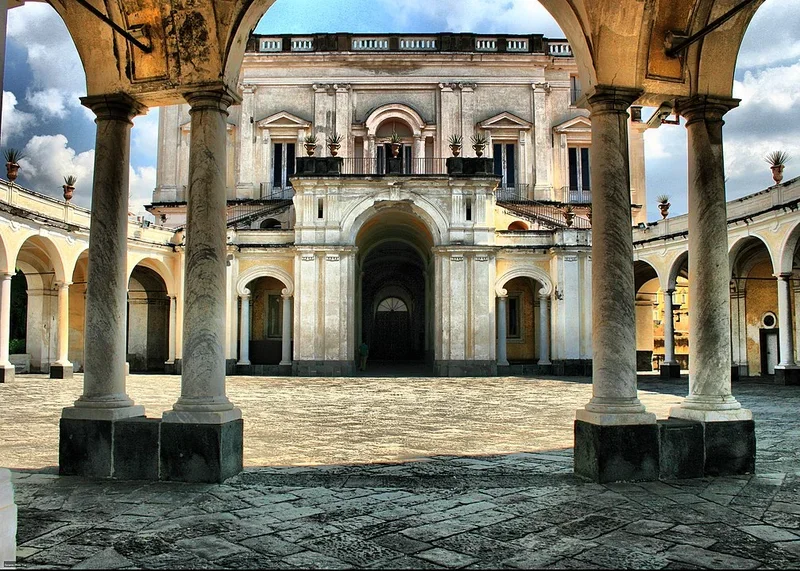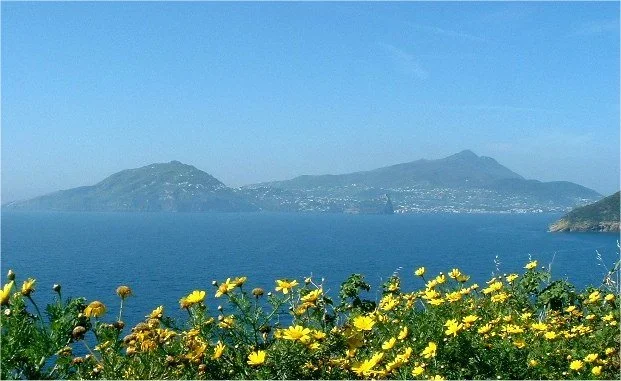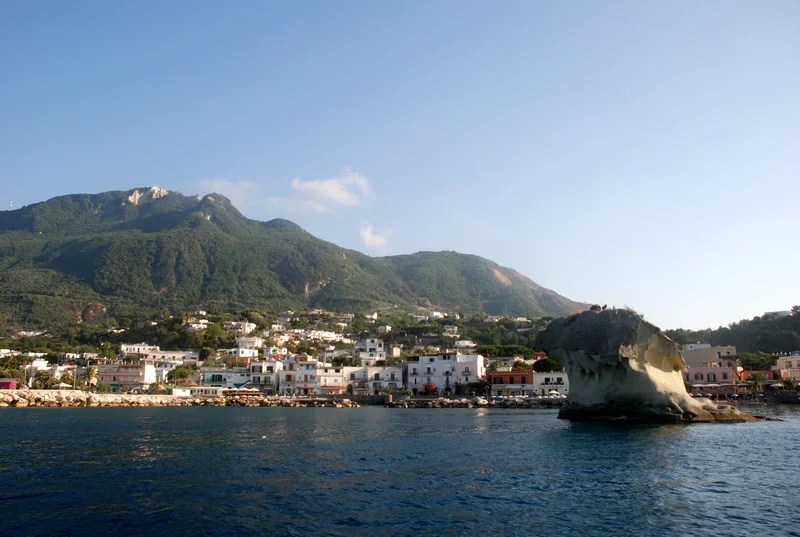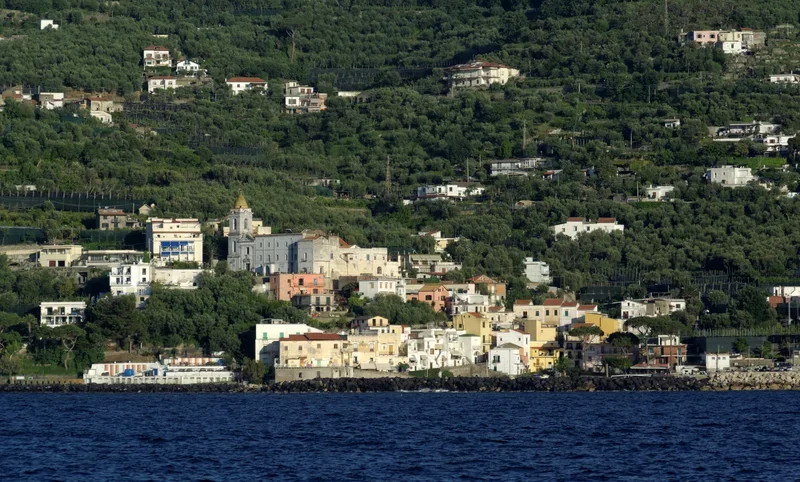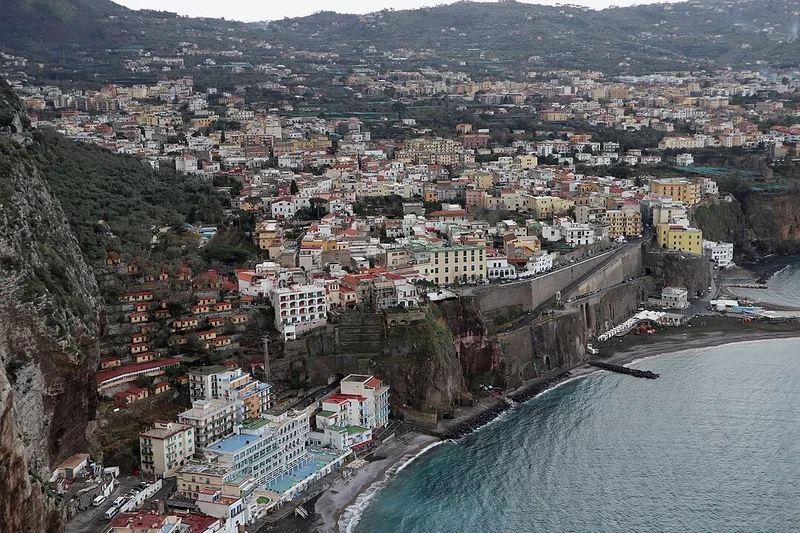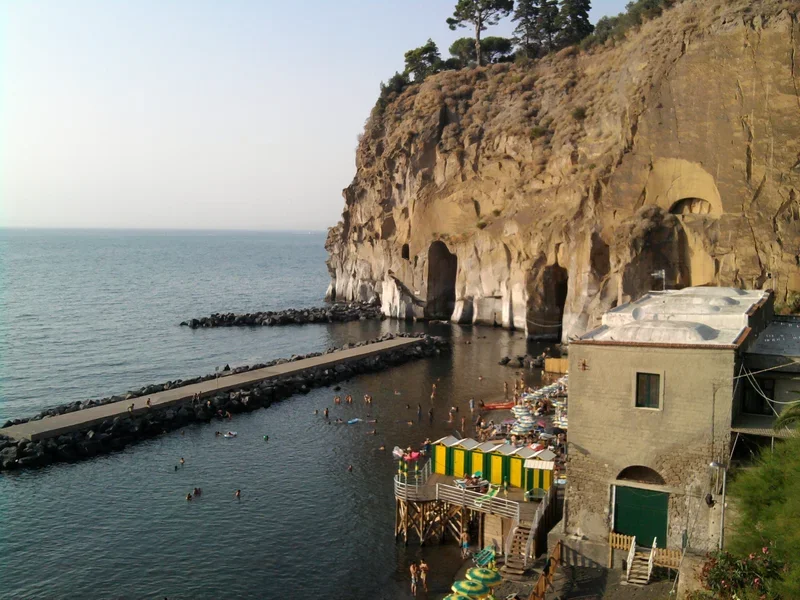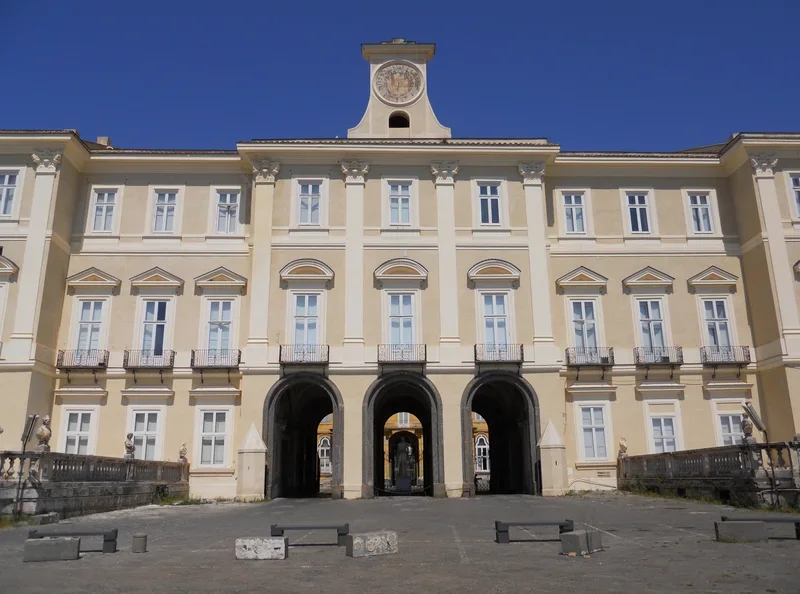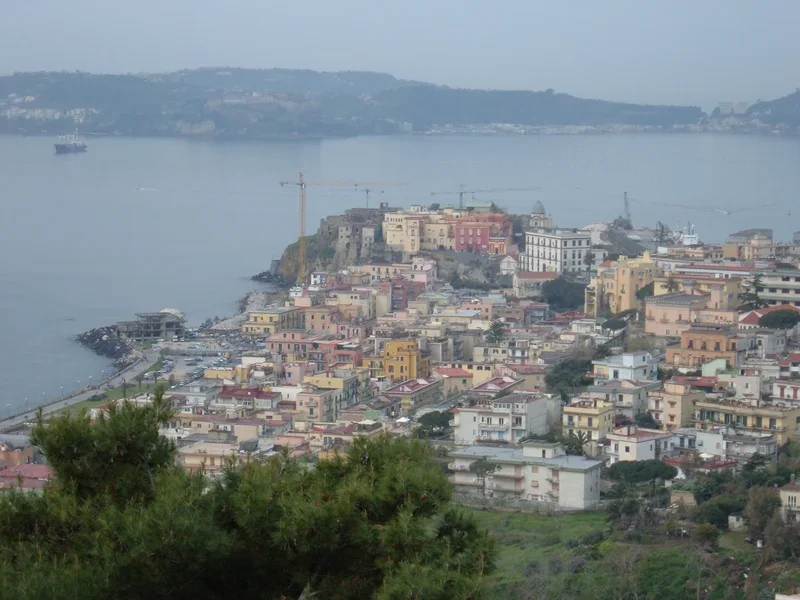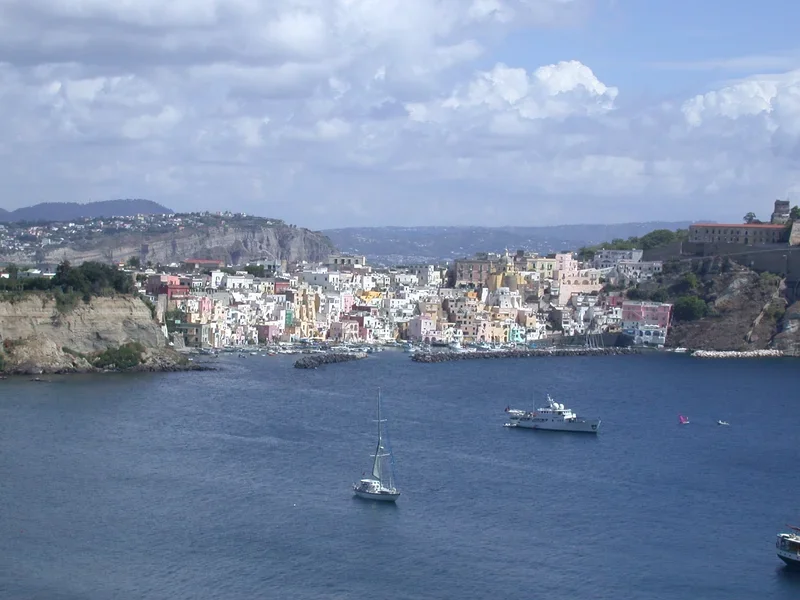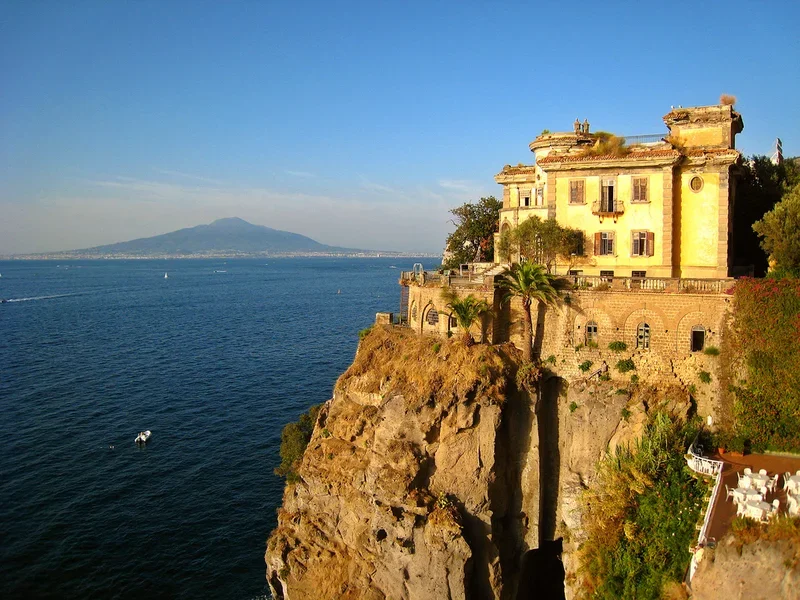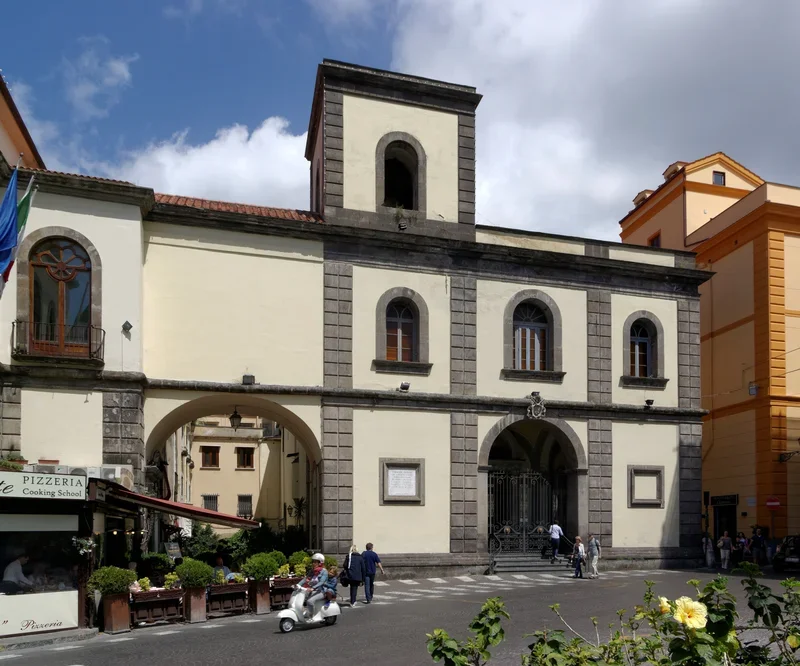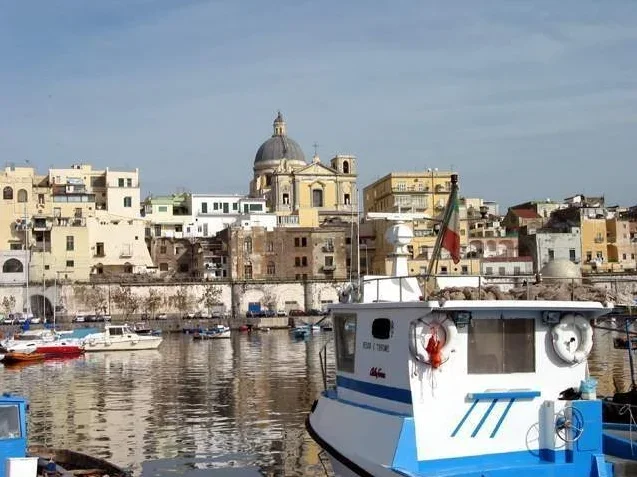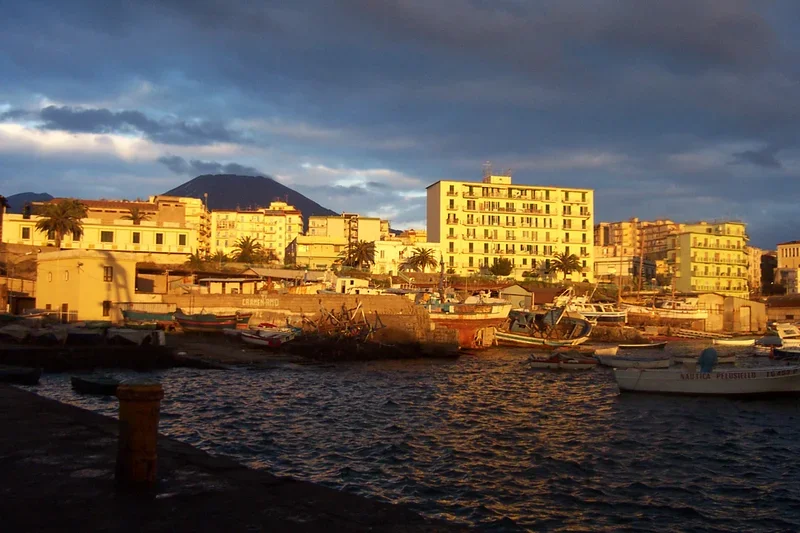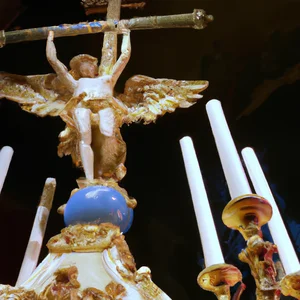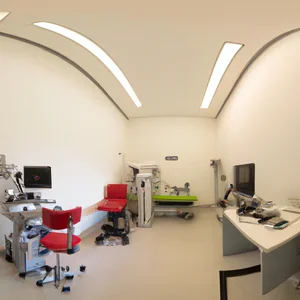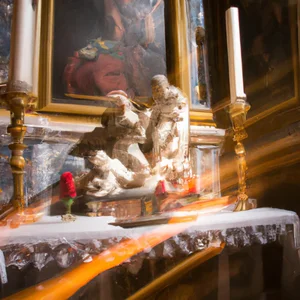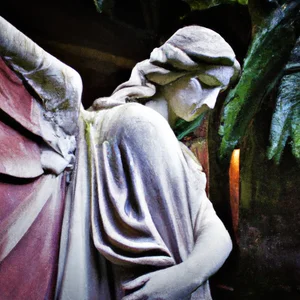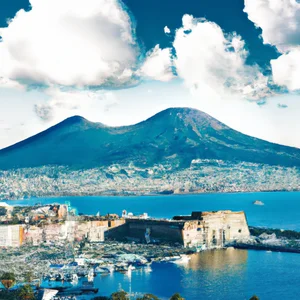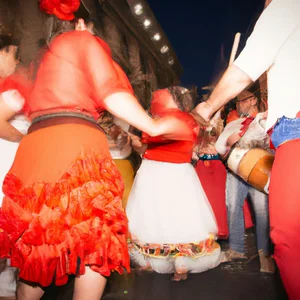Book your experience
Discover Naples through the places of My Brilliant Friend: Elena Ferrante's novels tour
Naples, a city that embodies a thousand-year history and a vibrant culture, has become the stage for one of the most beloved literary works of recent years: the tetralogy of “My Brilliant Friend” by Elena Ferrante. The novels not only capture readers’ imaginations, but also offer a deep and intimate look at a city full of contrasts, passion and tradition. In this article, we invite you to discover Naples through the places that inspired and animated the stories of Elena and Lila, two friends who grow up on the streets of a constantly changing district.
Through a tour that will touch ten emblematic points, we will explore the beating heart of the city, starting from the Luzzatti district, symbol of the protagonists’ childhood, up to Spaccanapoli, the backbone of Naples, which contains the soul and identity of the city. Each place tells a story, a fragment of life that reflects the challenges and aspirations of an entire generation. From the beauty and tranquility of Posillipo, a refuge for the bourgeoisie, to the lively glimpses of Chiaia, the elegant and sophisticated heart of Naples, each stop will be an opportunity to immerse yourself in the culture and daily life of this fascinating Campania capital.
Furthermore, we will have the opportunity to visit symbolic places of Neapolitan culture, such as the San Carlo Theater and the Mezzocannone Bookshop, spaces where the passion for art and knowledge come together. Through this journey, we will not only rediscover Naples through Ferrante’s eyes, but we will also experience the intensity of a city that continues to inspire and fascinate everyone who visits it. Get ready to walk through the streets of Naples, where every corner tells a story and every step is an invitation to discover a piece of our humanity.
Rione Luzzatti: the neighborhood of childhood
History and characteristics
The Luzzatti district is a neighborhood of Naples rich in history and tradition, known for being the place where many Neapolitans spent their childhood. Located in the heart of the city, this neighborhood has a strong identity and a deep connection with the local community.
The streets of the Luzzatti district are characterized by small artisan shops, colorful murals and ancient buildings that tell the story of the daily life of its inhabitants. Here it is possible to breathe an authentic and genuine atmosphere, far from the chaos and frenzy of the city.
What to see and do
A visit to the Luzzatti district is a journey into the past, to discover Neapolitan traditions and culture. Among the main attractions of the neighborhood are the Church of San Giuseppe, the Parco della Rimembranza and the Pignasecca Market, where it is possible to taste the typical flavors of Neapolitan cuisine.
For those who love art and culture, it is possible to visit the Museum of Traditional Arts and Crafts, which exhibits ancient tools and objects linked to the Neapolitan artisan tradition.
Gastronomy and traditions
The Luzzatti district is also famous for its gastronomy, with numerous trattorias and restaurants offering typical Neapolitan cuisine, such as fried pizza, pasta and beans and Sfogliatella. During religious holidays, the neighborhood comes alive with processions and popular festivals, which allow visitors to completely immerse themselves in the local culture.
In short, the Luzzatti district is a place not to be missed during a visit to Naples, a true treasure chest of traditions and authenticity that represents the true heart of the city.
Piazza dei Martiri: symbol of transformation
History and meaning
The Piazza dei Martiri is one of the most significant places in Naples, full of history and symbolism. The very name of the square, dedicated to the martyrs of the Neapolitan revolution of 1799, evokes sacrifice and commitment to freedom and independence. The square has undergone several transformations over the centuries, becoming a point of reference for the city and its inhabitants.
Architecture and monuments
The square is surrounded by historic buildings of great architectural value, including Palazzo Serra di Cassano and Palazzo Calabritto. In the center of the square stands the monument to the Martyrs, a work that celebrates the courage and determination of those who gave their lives for the cause of freedom. The presence of this monument makes the square a place of reflection and memory, as well as meeting and socialising.
Activities and events
The Martyrs' Square is also a point of reference for the cultural and social life of the city. Events, demonstrations and concerts are often held here, attracting residents and tourists from all over the world. The square is also surrounded by elegant cafes and restaurants, making it an ideal place to spend pleasant moments of relaxation and leisure.
The Piazza dei Martiri is therefore a place rich in meanings and symbols, which represents the history and identity of Naples. Its architectural beauty, combined with its historical and cultural importance, make it one of the most evocative and fascinating places in the city.
Via Tasso: Elena's residence
One of the most significant streets of Naples
Via Tasso is one of the most important and significant streets in Naples. Located in the Sanità district, it was the residence of illustrious people and has a history rich in culture and tradition. In particular, it is known for having been the residence of Elena, an emblematic figure of the city.
Elena was a woman of extraordinary beauty and intelligence, admired by all who knew her. His house on Via Tasso was a point of reference for the cultural and social life of the city, frequented by artists, writers and intellectuals. Her passion for literature and music was contagious, and her home was always open to anyone who wanted to share their passions and knowledge with her.
Elena's residence on Via Tasso was a place of meeting and cultural exchange, where literary events, concerts and art exhibitions were organised. His library was full of precious and rare books, and his music collection was one of the most important in the city. His house was a true treasure of knowledge and culture, and anyone who entered it was fascinated by it.
Elena loved her city and her house on Via Tasso was a reflection of her love for Naples. Every corner of the residence was cared for down to the smallest detail, with antique furniture, precious paintings and art objects that testified to his passion for beauty and history. His house was an oasis of tranquility and harmony, where time seemed to stop and every visit was an unforgettable experience.
Posillipo: the refuge of the bourgeoisie
Posillipo
Posillipo is one of the most exclusive and evocative neighborhoods of Naples, located on a hill overlooking the Gulf of Naples and offering breathtaking views of the city and Vesuvius. The neighborhood is known as the refuge of the Neapolitan bourgeoisie, thanks to its luxurious villas and the splendid views it offers.
Posillipo is a place rich in history and culture, with numerous testimonies of the ancient Roman presence, such as the Villa of Publio Vedio Pollione and the Grotta di Seiano. The neighborhood is also famous for its splendid gardens and parks, such as Parco Virgiliano, from which you can enjoy a unique panoramic view of the Bay of Naples.
The Posillipo neighborhood is also known for its social life and its trendy clubs, where you can taste delicacies of Neapolitan and international cuisine. Among the most renowned restaurants in Posillipo are the Ciro a Mare Restaurant and the La Bersagliera Restaurant, where it is possible to taste typical dishes of the Neapolitan culinary tradition.
Posillipo is also the ideal place for those who love the sea and outdoor activities, thanks to its beaches and hidden coves, such as Gaiola and Marechiaro. Here you can practice water sports such as surfing and kayaking, or simply relax in the sun and enjoy the crystal clear sea.
In conclusion, Posillipo is a true paradise for those seeking tranquility, beauty and elegance, immersed in nature and surrounded by works of art and culture. A place that enchants and fascinates, making each visit an unforgettable experience.
Chiaia: the elegant heart of Naples
Description
Chiaia is one of the most prestigious neighborhoods in Naples, known for its elegance and charm. Located along the seafront, Chiaia offers breathtaking views of the Gulf of Naples and the island of Capri. The narrow, winding streets are lined with fashion shops, luxury boutiques, trendy cafes and fine restaurants. Here there is a chic and sophisticated atmosphere, which attracts both wealthy residents and tourists looking for elegance and refinement.
Points of interest
One of the most iconic places in Chiaia is the Galleria Umberto I, an elegant covered shopping center with a splendid glass and wrought iron dome. Here you can find high fashion shops, jewelers and historic cafes, which make the walk inside this gallery a unique experience. Another unmissable place is the Villa Comunale Park, a green oasis in the heart of the city where you can relax and enjoy the beauty of the landscape.
Culture and entertainment
Chiaia is also known for its lively cultural life, with numerous theatres, cinemas and art galleries offering high-level entertainment. The San Carlo Theatre, for example, is one of the most famous opera houses in the world and hosts highly prestigious opera, ballet and concert performances. Furthermore, the neighborhood is home to numerous cultural events and displays, which contribute to making Chiaia a vibrant and dynamic place.
In conclusion, Chiaia is the elegant heart of Naples, a place where history, culture and beauty come together to create a unique and fascinating atmosphere. Anyone who visits this area of the city will certainly be struck by its beauty and its timeless charm.
Mezzocannone bookshop: the place of knowledge
A cultural icon in Naples
The Mezzocannone Bookshop is one of the most iconic places in the city of Naples, located in the heart of the historic center, precisely in via Mezzocannone. Founded way back in 1963, over the years this bookshop has become a point of reference for lovers of culture and literature.
A vast selection of books and cultural events
The Mezzocannone Bookshop boasts a vast selection of books of all genres, from classics of Italian and foreign literature to the latest publishing news. Furthermore, it regularly hosts cultural events such as book presentations, meetings with authors, debates and conferences, thus contributing to the spread of culture and knowledge in the city.
A place for meeting and cultural exchange
The bookshop is also a meeting place and cultural exchange, where it is possible to meet people who are passionate about books and art, exchange opinions and ideas, and create a community of readers and thinkers. Furthermore, the bookshop actively promotes local culture, supporting emerging Neapolitan artists and writers.
A welcoming and stimulating atmosphere
Anyone who enters the Mezzocannone Bookshop is surrounded by a welcoming and stimulating atmosphere, where it is possible to immerse themselves in the shelves full of books and let themselves be carried away by the magic of reading. The booksellers are always available to advise customers and suggest new readings, thus creating a unique and unforgettable experience for all culture lovers.
In conclusion, the Mezzocannone Bookshop is much more than a simple bookshop: it is a place of knowledge, culture and meeting, a real treasure for the city of Naples. Anyone lucky enough to visit it will be fascinated and inspired by it.
Teatro San Carlo: culture and art
History and Description
The San Carlo Theatre, located in the heart of Naples, is one of the oldest and most prestigious opera theaters in the world. Inaugurated in 1737, it was designed by the architect Giovanni Antonio Medrano and financed by King Charles of Bourbon. The theater has a capacity of approximately 1400 seats and hosts opera, ballet, concerts and other cultural events.The San Carlo Theater is considered a true jewel of neoclassical architecture and has a history rich in cultural and artistic events. Over the centuries, the theater has hosted performances by famous composers such as Rossini, Bellini, Donizetti, Verdi and many others.
Programming and Events
The San Carlo Theater offers a rich and varied program that ranges from tradition to innovation. Each season offers a series of top-level shows, with the participation of internationally renowned artists. Among the most anticipated events are performances of operas, classical ballets, symphony concerts and recitals.The San Carlo Theater is a point of reference for culture and art in Naples and attracts visitors from all over the world thanks to its prestigious reputation and the quality of its productions.
Guided Tours
The San Carlo Theater offers the possibility of taking part in guided tours to discover the secrets and history of this prestigious theatre. During the visit you can admire the elegant halls, the sumptuous foyer, the majestic main hall and the stage. Visitors will have the opportunity to get up close and personal with behind the scenes and immerse themselves in the magic of the theatre.Guided tours represent a unique opportunity to live an unforgettable experience and discover the hidden treasures of the San Carlo Theatre.
In conclusion, the San Carlo Theater is an unmissable place for lovers of culture and art, a symbol of excellence and tradition that continues to amaze and excite the public with its magnificent productions.
Via San Gregorio Armeno: traditions and craftsmanship
Traditions
Via San Gregorio Armeno is one of the most famous and characteristic streets of Naples, known above all for its tradition linked to the production of handcrafted nativity scenes. This street is famous throughout the world for its artisan workshops that create miniature nativity scenes with care and skill. The tradition of the nativity scene in Naples dates back to the 13th century and is still passed down from generation to generation.
Crafts
The artisans of Via San Gregorio Armeno are true masters in creating figures for the nativity scene, using high quality materials and working with great passion and dedication. Every year, thousands of tourists visit this street to admire the works of art displayed in the shops and to purchase unique pieces to take home as souvenirs. Among the most famous figures are the shepherd, the Madonna, Saint Joseph, the Three Kings and many other characters who enrich the Neapolitan nativity scene.
Furthermore, along Via San Gregorio Armeno it is also possible to find shops selling handcrafted objects in ceramic, wood, glass and other materials typical of the Neapolitan tradition. Each shop has its own style and specialization, offering visitors the opportunity to discover the creativity and skill of local artisans.
Finally, during the Christmas period, the street comes alive with lights, colors and Christmas music, creating a magical atmosphere that attracts tourists from all over the world. The nativity scene in Via San Gregorio Armeno is a symbol of Neapolitan traditions and represents an important testimony to the city's cultural heritage.
Lungomare Caracciolo: walks and reflections
The Lungomare Caracciolo is one of the favorite destinations for Neapolitans and tourists who want to enjoy a pleasant walk along the sea and admire the breathtaking view of the Bay of Naples and Vesuvius.
This seafront extends for about three kilometers, starting from Mergellina up to Castel dell'Ovo, passing through Santa Lucia and via Caracciolo. Along the route you can find numerous bars, restaurants and ice cream parlors where you can stop to taste local specialties or simply relax and enjoy the view. Furthermore, along the Lungomare Caracciolo there are also several benches and green areas where you can sit and take a break.
The Lungomare Caracciolo is also a perfect place to do outdoor sports, such as running, jogging or cycling. Numerous people frequent this seafront every day to keep fit and enjoy a bit of relaxation.
Not just a place for leisure and sport, the Lungomare Caracciolo is also a place for reflection. The view of the sea and Vesuvius, combined with the sound of the waves crashing on the shore, create a magical and relaxing atmosphere that invites meditation and contemplation. Many visitors stop along the waterfront to think, reflect or simply enjoy the present moment.
In short, the Lungomare Caracciolo is a place that offers various opportunities and that can be appreciated by everyone: from tourists who want to discover the beauty of Naples, to Neapolitans who wish to spend time in the open air, up to those looking for a some peace and quiet to reflect and relax.

